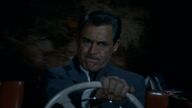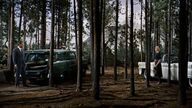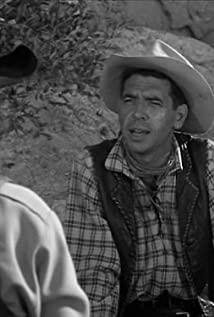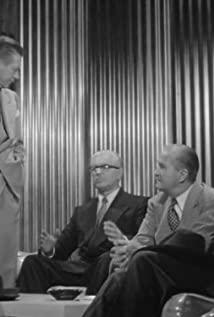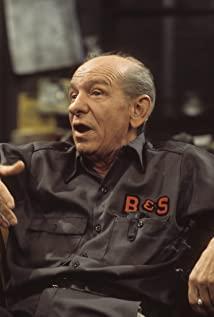Park Chan-woo said: Hitchcock has successively launched "Victoria", "Northwest by Northwest" and "Terror" within three years. This amazing talent is simply jaw-dropping. What's even more incredible is that "North by Northwest" is still his leisure work for relaxing in the two blockbuster films, which is simply speechless.
If this is the case, it is indeed jaw-dropping. However, what’s even more jaw-dropping is that Park Chan-wook’s perspective on the movie is also very powerful. For example, he hits the core of the film "Northwest by Northwest" with a single sentence: "The protagonist was mistaken for someone else. In order to find self-identification, he kept setting foot on Journey and adventure. "
When I watched this film for the first time, I simply regarded it as "a story of a man being chased and killed by a policeman and a gangster", but Park Chan-wook disassembled this story into preconditions (misunderstood as others) and purpose (seeking Self-identification), results (on an adventurous journey). More importantly, according to Park Chan-wook’s understanding, the film really revolves around how the protagonist finds his identity, and in the following recounting of Park, he disassembles the film layer by layer, driving straight forward. In the heart of the protagonist, he has witnessed how he lost his self-awareness step by step and turned from a decent middle class to a " fugitive murderer ". This is a real lesson on drawing pictures on paper.
In Park Chan-wook's understanding, the male protagonist is a person who has lost his identity. In the movie, how do you use the plot and images of the image to express such an abstract concept? We can follow Park Chan-wook's thoughts to watch this movie.
The character/character setting of the protagonist Thornhill
01 Occupation: Senior in an advertising company
The protagonist Thornhill is a professional advertiser in the movie. The man in suit and leather works in the modern building. Judging from his age and seniority, he should be the management (has an assistant). In his values, he believes that there are no so-called lies in the world, only "the expedient exaggeration" like advertisements.
02About lies
Because he believes in such values (or occupational disease), Thornhill has been telling lies, starting from the first shot he appeared in the film. The door opened, and from the moment he walked out of the bustling elevator, everything and every word he explained to his assistant made people doubt the man's heart. For example,
He said: Give her (customer) a box of ten yuan candy, all wrapped in tin foil, she would think it was money.
——He wanted to use gorgeous packaging to cover up his cheap and false greetings.
He said: Tell her, my dear, I am almost every moment every second...
Assistant: That's what you said last time.
He said: Oh, do I have one? Then tell her that this gift gives you sweet teeth and everything sweet about you.
——This is not the first time he has done this. It doesn't matter, it's just that he has forgotten when he said this sentence, and he still doesn't remember who he said it to. What's even more exaggerated is that under such circumstances, he made up another lie completely without thinking, and put a layer of "sweet" icing on his hypocritical nature.
Then, he originally planned to walk,
Take a taxi from a gentleman.
He said: This lady (his assistant) is seriously ill. Don't you mind?
——And the fact is, her assistant may just have no strength to walk because he didn't eat. Of course, it is also very likely because after listening to Thornhill a bunch of lies, my heart is very tired.
After getting in the taxi, when her assistant said, "(The person who was robbed of the car) is so pitiful," Thornhill said:
"Okay, so he will be very happy and feel like a great person."
He regarded his selfishness as a kindness to give to others.
hehe. There is also a scene in the elevator behind.
Thornhill, his mother, a knife killer.
At this moment, the killer had a complete opportunity to attack Thornhill, but when the elevator door opened, he said to cover himself:
" Lady first"
Then he ran out of the elevator first and slid away.
His so-called "friendliness" is entirely for selfishness.
How could there be such a person.
There is also an irony that when he is caught by a bad guy in the car, he wants to ask the bad guys to let him go on the grounds that "my friends are still waiting for me in a bar, and they will think I am rude ." It's ridiculous that a person who grabs Taxi puts " li " on his lips.
Ever since, this Thornhill who is telling lies, he is accustomed to living a vain life full of speculation and flattery. He sells people things they don't need, and even makes women who don't know him fall in love with his rhetoric. Day after day, he gradually lost himself in the subconscious——
What is true love? What is falsehood? who am I?
Hitchcock’s strength lies in the fact that since Thornhill’s first appearance in the lens, every dialogue and every action has constructed his character and personality.
03 years of "mother's boy"
Thornhill has been married twice, but he is still extremely dependent on his mother.
In the taxi, after his assistant recorded many public relations lies for him, Thornhill revealed his only honesty——Only for His Mother: He reminded his mother to remember to watch a movie, have dinner at 7 o’clock, and even He must tell his mother to go to the bar for two drinks first. And when you get off the bus, you have to tell your assistant, "Don't forget to call my mother." Until I saw it with my friends, I was still anxious: What should I do, my mother is playing cards, and there is no phone in that place, and his assistant will not be able to contact my mother.
Forget it, let's send her a telegram.
Oops, that's it, Thornhill was targeted by the bad guys.
The first time I saw it, I didn’t understand it. Later I sorted it out. It turned out that the Knife Killer asked the waiter in the restaurant to find out if there was a person named George Kaplan. Hill called the waiter, and was mistaken by the killer for Thornhill—in fact, he was just looking for the waiter to send a telegram. In this way, the bad guy thought Thornhill was Kaplan.
So, because of his excessive dependence on his mother, he was involved in this life and death adventure.
Including when he was caught driving into the police station while drunk, the police said you'd better call the lawyer, but he called his mother for help; and he even asked his mother to get the key to the hotel room and asked her to put on a pure smile—— Even if you are hypocritical, you have to pull your own biological mother into the water, which is really humorous.
In this way, a "middle-aged Ma Baonan" who survives on speculation and lies, is very immature, and is not strong enough in self-will, emerges in Hitchcock's image like this. Such a personality also made Thornhill a serious self-doubt when he was mistaken for another person.
However, Hitchcock was not satisfied with letting his characters stop here, he sculpted the clay figurines in his hands more meticulously.
Recap
Hitchcock designed a villain, Van Dan
(Vandamm), let him deal with Thornhill. The way to deal with him was to mistake Thornhill for someone called "George Kaplan" and hunt him down. More importantly, this Kaplan is nothing but a non-existent character.
how did you do that?
It turned out that Van Dan wanted to steal state secrets and needed to obtain intelligence from the CIA. The CIA had also anticipated Vandan’s misconduct, so it sent a female intelligence agent (she is the heroine Eve) as an undercover agent to play the role of Vandan’s mistress to exchange information at any time. The "thief" is like a tiger, and the CIA is also very thoughtful. In order to protect Eve, they made up the role of an intelligence agent as a bait to lure Van Dan to hunt down the non-existent intelligence agent-George Kaplan.
So by mistake, Thornhill was mistaken for the CIA intelligence agent, and Fandan insisted that Thornhill was the Kaplan, even if Thornhill was telling the truth, with a dumb face, not at all. Know what happened. Because in the CIA's fictional Kaplan setting, the intelligence agent came and went without a trace, often changed his name and identity, and lived in various hotels (the CIA often sent people to move things in and out of the hotel with ulterior motives). , Such as constantly washing "Kaplan" suits in order to create the illusion of Kaplan's real existence)
After Thornhill was caught by Van Dan, he denied that he was an intelligence agent, and even showed him his ID card, but it didn't work at all. Van Dan didn't believe it. This is Hitchcock’s ingenuity
——In daily life, he tells sweet lies that people believe to be true, but when he tells the only truth to prove his existence, no one believes it. As an advertiser, the advertisements produced should be "broadcast", and the "lie" in Thornhill's daily life should be a hundred responses; while in the car when he was kidnapped, the kidnapper's clever tongue-in-cheek justification for him was It is a state of pretending to be deaf and dumb.
This is where the film masters are superb, constructing an ironic dialectical relationship between "true" and "false" in the plot .
04 Self-doubt
Thornhill's self-identity is very fragile.
This was not enough. On the day Thornhill was caught, Hitchcock asked Vandan to buy him a drink—in fact, he was drunk with wine, creating a field where Thornhill’s consciousness was hallucinated.
In confusion, he drove a Mercedes while drunk and was arrested by the police. Calling the old mother at the police station, he consciously said forcefully: "Mom, I am your son Thornhill."
To quote Park Chan-wook's interpretation: "This shows that his heart is full of anxiety. He asks himself:'Am I really Thornhill?'"
The next day, sober up.
No one believed what happened to Thornhill last night, and even his mother wondered if his son was lying. In such a situation, can self-doubt be avoided? Why should I play the role of Kaplan, then who am I?
He went to the hotel where "Kaplan" was staying, looking for clues.
When he took the room card and was about to enter Kaplan's hotel room, the cleaning lady asked him if he wanted to change the bed linen as he was Mr. Kaplan. He replies freely-this is his answer as Kaplan, indicating that he has entered the state of playing Kaplan.
And when he answered "Don't do it now", there was a puzzled expression on his face: "Who am I?" Thornhill, or Kaplan?
He came to the United Nations Parliament Building again to search for secrets.
When the lady at the front desk asked his name, he hesitated (reversely asking himself: eh? My name?), and then answered George Kaplan's name-which marked that he officially began to play the role of Kaplan.
It can be said that "the split between Thornhill and Kaplan is actually the split of Thornhill himself" (Park Chan-wook), but this is a process from passive acceptance to active acting. After Hitchcock made the protagonist lose his identity, he began to accept playing another identity. There is a sense of schizophrenia, but Hitchcock let it happen naturally.
At this point, I think we should have answered the previous question: how to construct an abstract concept with specific plots and images in the movie. Hitchcock gave us a perfect answer.
The bonus items are the next part.
In Park Chan-wook’s understanding, in order to show the protagonist Thornhill ’s image of “ no foundation ”, Hitchcock asked “what we saw was his travels through various means of transportation, and had never seen his residence”. The places he went did not belong to him. The drunken fictional places, the rooms of other people on the train, Kaplan's hotel residence, cornfields, etc., were all the places he passed by.
He moved/wandered in various places, was forced to take various means of transportation, and embarked on an escape journey, all of which were designed by Hitchcock, leaving him in a passive state of inferiority. Only in this state can the protagonist I will try my best to get rid of my own "fine points" and chase after myself to find my identity.
In the end, he drove with his sober identity to save the heroine and himself.
I edited the shots of Thornhill taking various means of transportation in the film. It is really wonderful. Every time he takes a ride, he blends with his situation and psychological state.
Therefore, in Park Chan-wook's view, we can "see this film as a story of Thornhill restoring relationships with others, finding true love and a sense of responsibility". I will only analyze and write down notes about the details of the movie here. As for how the protagonist overcomes difficulties and finds true love, I won’t be spoiled here. I leave it to you to discover.
If you want to watch this video, you can read to the end of the article.
Death and rebirth
"Kaplan, who was hit by the blank bullet, died. As someone else, Thornhill filled the fictional space he wanted to get rid of. In order to save the woman he loved, he risked his life to play on the scene, and this is not the case. It is the death of Thornhill rather than the death of Kaplan. In a sense, this is the death of the fictional character Kaplan, and it is also the death of the "meaningless" surviving character Thornhill, and Thornhill Rebirth through death in this way (Park Chan Wook)."
Symbols in the movie
Mercedes without brakes
"The car that barely got in when he was drunk cannot stop unless it collides with other cars. It implies the beginning of Thornhill’s self-identification adventure. It also implies that this adventure "has no brakes." "Unable to stop (Park Chan Wook)."
Overlooking the camera-moving point
"Tanghir, who ran away with the charge of homicide, is in the extreme long shot of the vertical overlooking which is known as "God's perspective". He is just a moving point, or a stain. An advertiser who is full of confidence in everything. , Has now become a bug (Park Chan Wook) desperately fleeing."
Airplane and cornfield
"In Hitchcock's shots, Thornhill resembles a field mouse being chased by an eagle, and has fallen into a pest (Park Chan Wook)."
The light of true love
When Thornhill accepted the professor's proposal to play the role of Kaplan for the heroine, the light of the plane was reflected on his face.
Political symbol
"On the cliff on Mount Rushmore with the huge portraits of the four American presidents, Thornhill and Eve are facing a death crisis. These majestic monuments symbolize politicians, government, democracy, etc. But these are expressionless. It seems that the president of the United Nations failed to help the hero and heroine to get out of the predicament. Instead, it helped. Just as the National Assembly Building, which was previously printed on the CIA plaque, did not take responsibility for Thornhill’s safety, and just as the United Nations Headquarters turned into murder and The framed stage, the defenders of law and order did not help Thornhill in his life. It is said that Hitchcock, who treated the whole play as a kind of irony, tried to stuff Thornhill into Lincoln’s nostrils. The sneeze is caused artificially. Lincoln should be sneezing, so why should Thornhill sneeze? Because Lincoln is nothing more than a respectable politician (Park Chan-wook)."
tunnel
"The train enters the tunnel, implying the male genitalia. But this can't be said nonsense-Hitchcock said in an interview with "Screenplay" (Park Chan-wook)."
No wonder Park Chan-wook wrote this article "North by Northwest"
It's called "Trying to Live Your Man"
Interpreting McGoffin's concept
"This film is also known as Hitchcock's best interpretation of McGoffin's concept. In this work, the secrets of the U.S. government hidden in the statue of the Talas warrior make life empty and unreasonable. The place was pushed to the top (Park Chan Wook)."
The concept of McGoffin means that some plots in the movie are very important at the beginning, but when the plot develops, the characters' loyalty or love and hatred become the focus of the audience, and some of the previous plots gradually become less important. Sometimes it doesn't even matter at all.
A scene that was almost cut off
Editing display of panoramic shots "time (sequence)"
"This shot fully demonstrated Hitchcock's editing skills. Thornhill took the car to the woods. In this long shot, Hitchcock edited the panorama of Thornhill. When he stood behind the car When the camera moved backwards, the first Eve appeared in the shot. In the shot captured by the wide-angle lens, the two appeared at both ends of the distant shot. Thornhill walked towards Eve first, and Hitchcock edited it in a panoramic way. The camera moved to the side following the person. This time it was Eve’s panoramic editing. She also walked towards Thornhill, and the camera moved with it. At this time, contrary to the previous one, Thornhill entered the camera. The purpose of the camera is that men and women embrace each other. It’s about exploring how two independent personalities merge into one (Park Chan Wook)."
About the association of the title
Let’s look back at some symbols in the opening film
The reflection of the glass windows of the building -a symbol of the hypocrisy and deception of modern people
Title (smaller words) + name (larger words)
The name represents the identity of the person, and the distinction between upper and lower letters distinguishes the visually coordinated beauty, and seems to indicate that the self-identity as a person is greater than the identity conferred by the profession.
The names of people moving up and down in the glass mirror of the modern building , together with the mirror image of the reflection, seem to indicate that the film will soon be about "identity" and "nothingness". Jumping up and down, like an elevator going up and down in a building. And the first shot the protagonist appears is in the elevator, telling endless public relations lies. The elevator seems to symbolize the life of the protagonist moving up and down.
Rush music : interlaced performance of the high-pitched flute and bass saxophone, heralding the fast-paced adventure and pursuit of the film.
The people in the building are like flocks being driven, heralding Thornhill's "meaningless" life at the beginning.
Finally, Hitchcock made a cameo,
Played the hapless passenger who missed the car
View more about North by Northwest reviews




